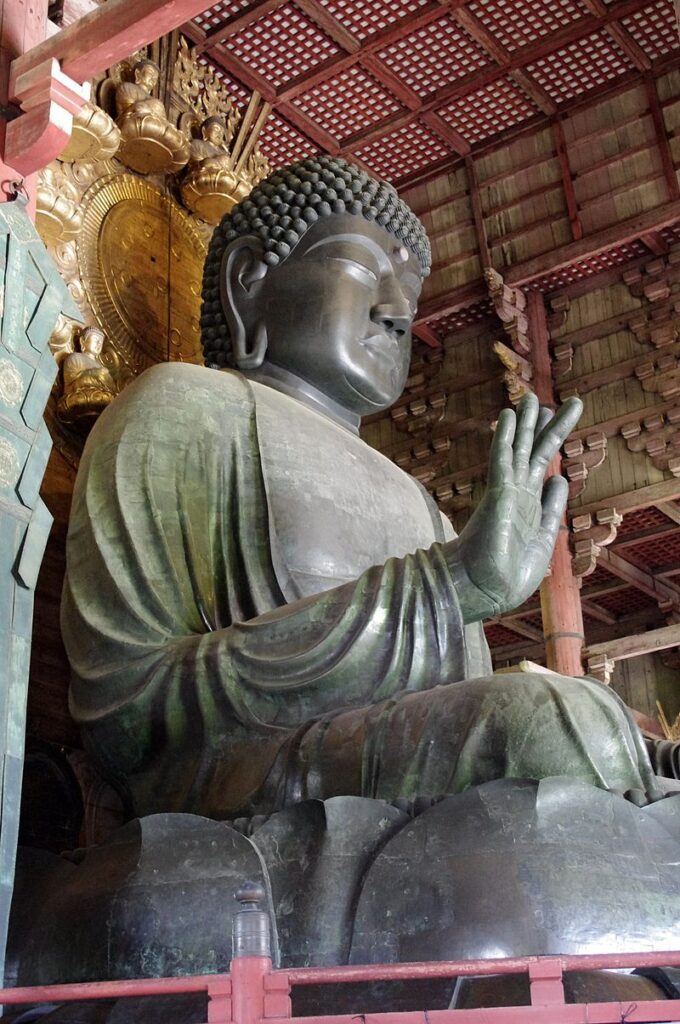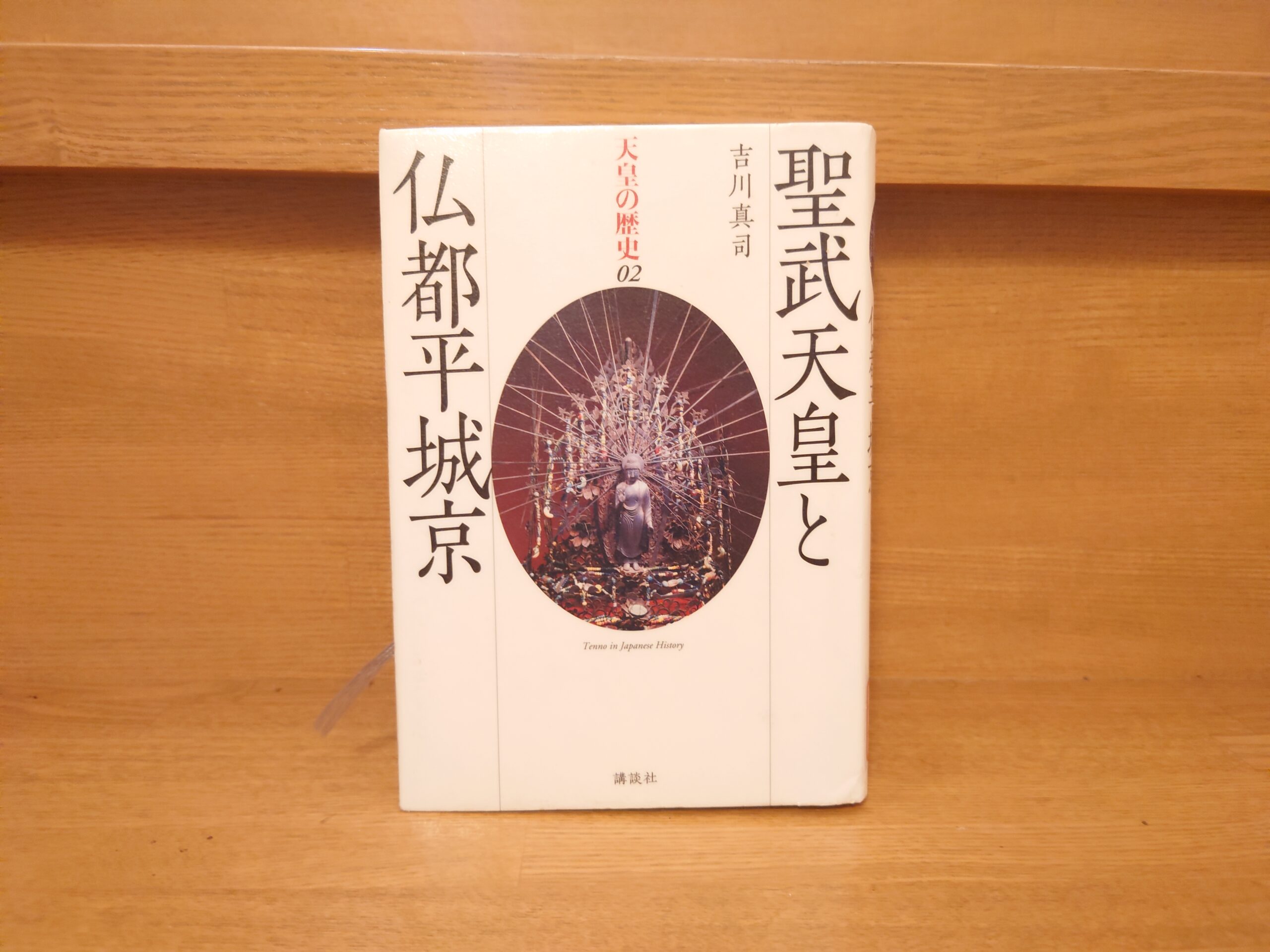Shinji Yoshikawa, "History of the Emperors, Volume 02: Emperor Shomu and the Buddhist Capital Heijo-kyo" Summary and Comments - Recommended for learning about the history of the Nara period and the flow of Buddhism!
Introduced here is "History of Emperors, Volume 02: Emperor Shomu and the Buddhist Capital Heijo-kyo" by Shinji Yoshikawa, published by Kodansha in 2011.
Let's take a quick look at the book.
Female emperors protected the direct imperial lineage of Temmu. Natural disasters and political upheavals awaited Shomu, who ascended to the throne with great expectations. The emperor, distressed by an epidemic of plague and disease, became deeply devoted to Buddhism, and the Heijo-kyo Capital became a Buddhist capital of deep color. Emperor Shoutoku, an unprecedented despot, and Emperor Kanmu, a denier of the Shomu dynasty, ushered in a new era. This film vividly depicts the tumultuous life of the ancient emperors and the actual image of the capital.
AmazonProducts Page.

This work, "History of the Emperors, Volume 02: Emperor Shomu and the Buddhist Capital Heijo-kyo" is a recommended reference book that provides an overview of the flow of the Nara Period.
When we think of the Nara period, Heijo-kyo Capital and the Great Buddha of Todaiji Temple immediately come to mind, but the point of this book is to look at these histories from the perspective of "emperors".
Looking at it from the perspective of "emperors," in other words, it can be called a political history. This book does not simply look at the history of Heijo-kyo and Todai-ji temples, but explains them in the context of the chaotic political situation of the Nara period.
A large overview of this book was posted on the Amazon product page, which you can also find here.
■The Empress who protected the direct imperial line of Temmu and the hardships of Emperor Shomu
After the fall of Emperor Temmu, the direct line of Emperor Temmu was protected by the female emperors Jito, Genmei, and Genjo, and passed down to Shomu. The role of the female Taisho Emperors who looked after the Emperor as Taisho Emperors is explained.
The emperor Shomu was faced with a series of earthquakes, bad harvests, and an epidemic that killed nearly 1.5 million people across the country. During the Tempyo period, when the nation was on the brink of crisis, Shomu, anguished to help the exhausted people, took refuge in Buddhism, ordered the construction of Kokubunji temples throughout the country, and issued a decree to build the Great Buddha in hopes of social restoration and recovery of national power. The film traces the emperor's arduous path leading to the opening of the Great Buddha at Todaiji Temple.■Folk missionaries spread to the Buddhist capital of Heijo-kyo
The Buddhist capital of Heijo-kyo was formed by the promotion of Buddhism by Emperor Shomu and Buddhist missionaries who devoted themselves to the propagation of Buddhism in the private sector. The activities of the Gyoki group are particularly noteworthy, and their efforts to help the needy and other aspects of social salvation through Buddhism are depicted.The conversion of the imperial lineage to the Tenchi line by the despotic monarch, Empress Kohken, and Emperor Kammu
Princess Shomu became the first female crown prince in history and ascended the throne as Kohken. She abdicated, became an ordained priestess, and placed great importance on Michikagami. When she fell out with Emperor Junnin, she abolished him and assumed the position of Shōtoku Emperor while still in the form of a nun. While suppressing the Nakamaro Rebellion, he promoted the mixing of Buddhism and Shintoism, and made Dōkagami a Zen priest and then a Dharma king, aiming for a monarchy that would serve Buddhism. However, when the tyrant Shoutoku died, Dōkyō was transferred to Shimono-yakushiji Temple, and Emperor Shirakabe, grandson of Emperor Tenchi, ascended to the throne and became Emperor Kōjin. Emperor Shirakabe, a grandson of Emperor Tenchi, ascended the throne and became Emperor Kammu. While Shomu was always supported by his guardians, including Emperors Motomei and Motomasa, and Fujiwara no Fuhito, Kammu, whose mother was Koya Shinkasa, a descendant of the Baekje clan, began to exalt the direct lineage of Tenchi in order to establish his own authority and to further enhance the authority of the maternal clans. What was the new era created by Kanmu, who rejected the "Shomucho" style and moved the capital to Heian-kyo? The reigns of emperors Heijo, Saga, Junwa, and Ninmei, and the maturation of Heian-kyo, are depicted.
Heijo-kyo after the Abolition of the Capital
AmazonProducts Page.
After the capital was moved to Heian-kyo, the Heijo-kyo site gradually turned into rice paddies. How were the emperors' estates managed and used? How did the temples that stood on the site of Heijo-kyo maintain their Buddhist lanterns? This section explores the original image of Nara's capital.
I found the section in the second half of the book on how the capital was moved from Heijo-kyo to Heian-kyo to be particularly stimulating. It is often said that the capital was moved from Heijo-kyo to Heian-kyo to distance itself from Buddhist powers, but it was interesting to learn that this was not actually the case, and that a major factor was a shift in the emperor's imperial lineage.
It is also interesting to look at the Nara and Heian periods from perspectives that we do not usually consider, such as the difference between the roles of the Buddhist capital Heijo-kyo and the political city of Heian-kyo.
The book itself was very easy to read and I was able to read it easily.
This is a recommended reference book to get an overall picture of the Nara and early Heian periods.
Why not pick one up?
This is "Shinji Yoshikawa, "History of Emperors, Volume 02: Emperor Shomu and the Buddhist Capital Heijo-kyo" - Recommended for learning about the history of the Nara Period and the flow of Buddhism! This was "The History of the Emperors, Vol.
Next Article.
Click here to read the previous article.
Related Articles





































